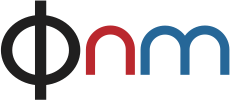New models for academic publishing
/Academic publishing is changing fast. In this post, I'll describe not only the exciting recent policy developments, but also several new models for the publication of scientific research.
Undoubtedly open access in set to truly break through this year, mainly thanks to strong funder mandates (e.g. RCUK and Horizon 2020). The debate has started to shift to the relative merits of author-pays-gold (or rather, funder-pays; see below) and institutional-repositories-green models. (Please see Peter Suber's widely accepted definitions for the terminology). Richard Poynder continues his important coverage of the developments, describing in detail the controversy over the UK's gold-first policy in the international context:
As the Committee began to explore the complaints it had received, a key issue emerged: Was RCUK’s policy in line with what the rest of the world was doing with OA, or was the country taking a risky gamble in the hope of acquiring a leadership role in the development of OA?
[...]
At a stroke, the risk the RCUK policy could pose for the UK begins to look much greater. If the rest of the world follows the US lead, rather than the lead of RCUK, the UK will likely discover that the extra transition costs it anticipates (paying both APCs and subscription) could continue indefinitely.
The "US lead" refers to the just introduced US bill dubbed FASTR, which would require free public access to all federally funded (published) research after a 6 month embargo period (green self-archiving), and also includes a lauded new open data component. Although such legislation has been introduced before, the current political climate is looking more amenable this time around. As the White House was still obligated to respond to a petition that gathered 65000 signatures demanding such a mandate, there were realistic hopes for a strong response from the Obama administration.
Thus, although not completely unexpected, The White House's response to the petitioners last Friday was well received indeed:
The logic behind enhanced public access is plain. We know that scientific research supported by the Federal Government spurs scientific breakthroughs and economic advances when research results are made available to innovators. Policies that mobilize these intellectual assets for re-use through broader access can accelerate scientific breakthroughs, increase innovation, and promote economic growth. That’s why the Obama Administration is committed to ensuring that the results of federally-funded scientific research are made available to and useful for the public, industry, and the scientific community.
Moreover, this research was funded by taxpayer dollars. Americans should have easy access to the results of research they help support.
The way the US government will ensure this is by an overarching mandate that any agency receiving more than $100M yearly in Federal funding for research or development must ensure that their research is openly available after a guideline 12 month embargo period (green self-archiving). A full memorandum of the decision is available on the White House Office of Science and Technology Policy's website. See also reporting by Nature News (also this) and Ars Technica, and the response from the National Science Foundation. Such a strong green mandate from the US leaves the UK policy looking rather lonely in the international context. Nature's recent editorial – perhaps unsurprisingly, since Nature has a vested interest in gold – expressed some disappointment:
But in 2013, it looks as if a combination of financial constraints and a lack of firm resolve at the top of the US government is blocking movement towards the policy that ultimately benefits science the most: ‘gold’ open access, in which the published article is immediately freely available, paid for by a processing charge rather than by readers’ subscriptions.
[...]
As for Nature, we view the US position as a signal that in the longer term, for highly selective journals, fully funded gold open access is a scientific necessity.
However, Peter Suber, one of the leaders of the open access movement, warmly welcomed the decision in an statement on Google+ soon after the announcement. He highlighted the similarities and differences between the White House memo and the FASTR legislation, making the case that both are necessary. For a more in-depth analysis, see his latest SPARC newsletter, where Suber compellingly argues that the directive should be viewed as a step forward despite the 12 month embargo:
Some friends of OA have criticized the White House policy for allowing excessive embargoes. I join the criticism but praise the policy. We must distinguish a backward step from a forward step that could have been larger. The White House directive is a forward step that could have been larger. Whatever the reasons were for not taking a larger step forwards, there's no sense at all in which it's a step backwards.
However, as continuing resistance from incumbent publishers remains strong, so does the rhetoric of open access advocates not content even with the recent progress, and more wrangling over the exact course of the change looks unavoidable.
Whatever happens with legislation, it is clear we are at a tipping point, with some estimates finding as much as 17% of literature published in 2011 openly available from publishers (however, see the discussion on the Guardian report of the study). With such a major shift in the centuries-old publishing industry in full swing, lean newcomers are seeking to challenge the incumbents, while the old giants are scrambling to reinvent themselves (at least on paper). New ideas and models are cropping up at an increasing pace, and several interesting novel ways of organizing the publication of scientific research have started to emerge.
One of the more disruptive new initiatives is the recently launched PLoS One –like journal PeerJ, which is trying to change the old adage "publish or perish" to "publish until you perish". PeerJ offers very affordable lifetime memberships that allow the members to publish either one, two or unlimited papers per year for a single, one-time flat fee. Additionally, PeerJ will use article-level metrics (as does PloS One) and (opt-in) open peer review. The launch has garnered some very positive reactions, although questions about the sustainability of the funding model seem to remain. An important issue is the quality of the peer review, and PeerJ's approach of having members review one article per year is clever (and already in use elsewhere). It is also worth mentioning that a few companies are trying to decouple peer review from journals altogether.
Another interesting development is the concept of arXiv overlay journals:
What is an arXiv overlay journal? It is just like an electronic journal, except that instead of a website with lots of carefully formatted articles, all you get is a list of links to preprints on the arXiv. The idea is that the parts of the publication process that academics do voluntarily — editing and refereeing — are just as they are for traditional journals, and we do without the parts that cost money, such as copy-editing and typesetting.
The Episciences Project is trying to set up a platform to make it very straightforward to set up such arXiv overlay journals. For the moment this activity seems to be concentrated on mathematicians, including Elsevier boycotter Timothy Gowers. Although open access advocate Steve Harnad has questioned the need to give this approach a new name, that seems to be a rather secondary concern considering the real change this approach would represent.
As mentioned in the Guardian story, the article processing fees (APCs) of many commercial publishers are rather high (and the degree of openness this buys varies greatly). This offers a clear opportunity for newcomers to establish themselves. Three more traditional type new open access journals taking advantage of this are eLife, which sets to compete with Science and Nature and is able to waive it's APCs at least for time being due to society support; the aggressively priced The Forum of Mathematics, which some of the people behind the Elsevier boycott are backing; the PLoS-like Open Library of Humanities; and a series of IZA's economics journals.
Consolidation of publishers is still ongoing, the latest news being that the Nature Publishing Group (NPG) has bought a majority share in the Swiss-based community-driven open access publisher Frontiers (read the announcement, Nature News Blog). This marks a big step up in the volume of open access articles NPG publishes; all NPG journals published 2000 open access articles in 2012, while Frontiers had doubled it's article count to 5000 to become the world's fifth largest open access publisher. Frontiers had also experimented with open peer review and other community features, which NPG is very interested in.
I've also personally had a good publishing experience with the Beilstein Journal of Nanotechnology, which is also able to waive APCs due to society support, at least for the time being. Although commercial publishers understandably have a great interest in defending their high APCs, emerging data doesn't seem to show a strong correlation between high price and article-level citation impact. This is an indicator that will be very interesting to follow as the citations stack up.
A related debate is the claim that gold open access is a burden on the authors themselves due to APCs. Peter Suber of the Harvard open access initiative debunked this claim thoroughly on Google+, while providing interesting data on where the costs actually fall. Commenters chimed in with important further details, such as the distribution of open access journals that do not and those that do charge APCs by scientific discipline. Many publishers (including the Forum of Mathematics) also have fee waivers for non-affiliated or non-supported authors.
Finally, there has been lively recent discussion on the best licensing terms for open access publications. Traditionally, open access activists (and indeed most journals) have favored the most liberal Creative Commons Attribution (CC-BY) license, which basically allows any sort of reuse with the proper citation. Some journals have opted for the CC-BY-NC license, which prohibits commercial reuse, but this can be problematic for several reasons. However, others argue that the choice of license is not always completely unproblematic.
To conclude, it looks clear that the year 2013 will be as interesting for open access as 2012. Since these issues are currently very much on the table in Finland as well as internationally, I'll be sure to keep updated on any interesting new developments.
In the meantime, if you can read Finnish, check out the magazine articles we have written on the topic with my colleague Jani Kotakoski, especially the latest one that just came out in the magazine of the Finnish Research Library Association, Signum. We are also looking for new publication venues to keep following the situation in Finnish, so any tips on that front are most welcome. Please also see the slides (embedded below) of a recent talk I gave on the positive effects open access and social media could have on research impact.
My thanks to Ross Mounce and Jani Kotakoski for commenting on a draft of this post.
[slideshare id=15932694&doc=openaccessandsocialmedia-130110080010-phpapp02]




